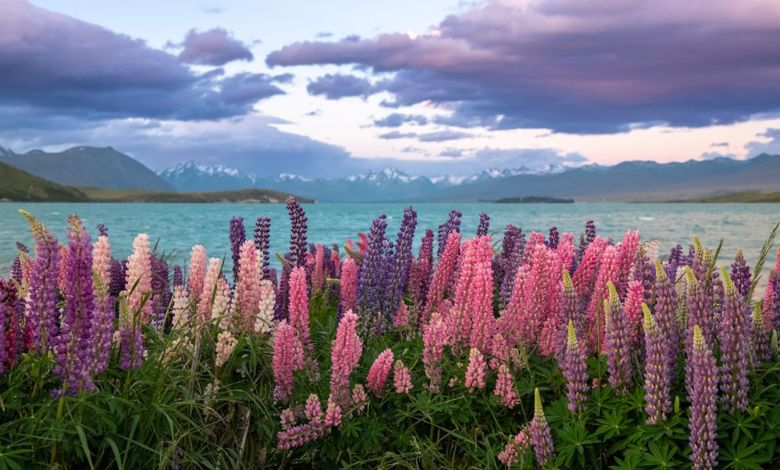What is an infralittoral zone? Discover what is beneath the sea that pulses with life and life connected to Earth.
Tide pools at the beach and investigating those things were just my favorite thing to do when going on family outings as a kid. The crabs running underneath the seaweed, the vibrant anemones attached to rocks-the things really sparked my interest in marine life.
Later, during one of my dives, I came upon something even more astonishing, the infralittoral zone. It’s an underwater world with its bright colors full of fascinating creatures and secrets, and very few even know it exists.
It’s kind of like finding those examples of social enterprise that address environmental challenges: it reminded me how everything is so deeply connected on the planet. I look forward to sharing what this hidden ecosystem is so unique and why it’s a very important part of the health of our planet.
Article Breakdown
What is the infralittoral zone?

The basic thing to know about the infralittoral zone is that it’s that part of the coastal ocean which never gets out of water, even during the very low tide. It ranges from the shoreline to a depth of approximately 50 meters in clear water, where sunlight can still reach.
It is, in other words, an underwater sunlit garden of plants and algae, somewhat the ocean’s equivalent of a lush, vibrant forest floor.
Main Features of the Infralittoral Zone:
- Well-lit environment: enough sunlight reaches the infralittoral zone, which is beneficial for photosynthesis. Many plant life exists in this area because of this; examples include seagrasses and algae.
- Stable Conditions: Unlike the intertidal zone, which never remains the same, the infralittoral zone has stable conditions. The temperatures and salinity remain nearly constant, and thus it is a quiet, predictable part of the ocean.
- Rich Biodiversity: This zone is replete with marine life. You will find fish, corals, crabs, and other species living here in this vibrant ecosystem.
Unique Features You Didn’t Know
1. A Lush Underwater Forest
Imagine swimming through a forest of tall, swaying kelp, where schools of fish dart between fronds. The infralittoral zone is often dominated by brown algae like Cystoseira species, which create underwater “forests” that serve as shelter and hunting grounds for countless marine creatures. These algae are to the ocean what trees are to land: they’re foundational to the ecosystem.
2. Molluscan Marvels
One surprising feature of this zone is its incredible molluscan diversity. From elegant nudibranchs to hardy limpets, these creatures thrive here. When I snorkeled off the Mediterranean coast, I was mesmerized by a vibrant array of sea slugs, their colors rivaling any butterfly or bird I’ve seen on land.
3. Photophilic vs. Sciaphilic Communities
Here’s a fun fact: plants and algae in this zone can be classified as photophilic (light-loving) or sciaphilic (shade-loving). While photophilic algae bask in sunlight in the upper regions, sciaphilic species cling to shaded rocks and caves. It’s like a natural zoning system for marine flora.
Why It’s Important to Marine Life
This vibrant zone is more than just a pretty underwater vista, it’s an ecological powerhouse. Let me break it down for you:
1. Food and Habitat
The infralittoral zone’s dense vegetation provides food and shelter for an incredible variety of species. Juvenile fish find refuge among seagrasses, while predators like octopuses hunt in kelp forests. It’s a thriving underwater metropolis where every organism plays a role.
2. Carbon Sequestration
Here’s something you might not know: seagrass meadows in this zone are crucial for trapping carbon. They’re like the ocean’s version of rainforests, absorbing and storing large amounts of carbon dioxide, which helps mitigate climate change.
3. Supporting Coastal Ecosystems
The infralittoral zone doesn’t just benefit marine life; it’s also essential for coastal protection. Seagrass beds reduce wave energy, preventing erosion and safeguarding beaches. Think of them as nature’s seawalls.
Hidden Threats: Human Impacts
Despite its importance, the infralittoral zone faces significant threats, many of which are caused by human activities. During a dive in the Gulf of Pozzuoli, I saw firsthand the damage pollution can inflict on marine habitats. Geochemical studies reveal that anthropogenic activities, like industrial runoff and waste dumping, disrupt the delicate balance of these ecosystems.
Key Threats Include:
- Coastal Development: Construction along coastlines often destroys seagrass beds and other critical habitats.
- Overfishing: Removing key species disrupts food webs and affects biodiversity.
- Pollution: Chemicals, plastics, and untreated waste can smother marine life and poison the water.
- Climate Change: Rising sea temperatures and acidification are particularly damaging to species that rely on stable conditions.
How to Protect the Infralittoral Zone
If we’re going to save this underwater wonderland, action is essential. Here are a few ways we can all contribute:
1. Reduce Plastic Use
Plastic pollution is one of the biggest threats to marine ecosystems. By cutting back on single-use plastics, you can help reduce the waste that ends up in our oceans.
2. Support Marine Protected Areas (MPAs)
MPAs are like national parks for the ocean. They safeguard critical habitats, giving marine life a chance to thrive without human interference. Support organizations that advocate for these areas.
3. Sustainable Seafood Choices
Opt for sustainably sourced seafood to avoid contributing to overfishing and destructive fishing practices. Look for certifications like MSC (Marine Stewardship Council) when shopping.
4. Participate in Beach Cleanups
Get involved with local beach cleanups. Every piece of trash removed is one less hazard for marine life.
A Call for Conservation
Exploring the infralittoral zone has been a humbling and eye-opening experience. I remember one dive off the coast of Turkey where I swam through a kelp forest so dense, it felt like stepping into another world. Schools of fish surrounded me, their shimmering scales catching the sunlight streaming through the water. It was a vivid reminder of how interconnected life is, from the tiniest algae to the largest predators.
That dive also brought a stark realization: we’re stewards of this planet, and what we do on land inevitably affects the sea. Seeing discarded fishing nets tangled in the kelp was a sobering moment. It motivated me to change my habits and advocate for marine conservation.
Key Takings
- The infralittoral zone is a hidden gem of the ocean, teeming with life and playing a vital role in maintaining ecological balance.
- But it’s under threat, and protecting it requires collective effort.
- Whether it’s through reducing plastic use, supporting conservation initiatives, or simply spreading awareness, we all have a part to play.
- Let’s cherish and protect this underwater wonderland for future generations.
- Maybe one day, you’ll find yourself diving into the infralittoral zone, marveling at its beauty and realizing just how much we stand to lose if we don’t act now.
Additional Resources:
- The Nature Conservancy: Explore their conservation efforts focused on protecting natural habitats and ecosystems.
- Marine Conservation Society: Discover their initiatives to preserve marine environments and promote sustainable ocean practices.
Note: Did you know the ocean makes up over 70% of the Earth? It’s home to countless species, and many haven’t even been discovered yet. When we protect areas like the infralittoral zone or other marine ecosystems, we’re not just saving these amazing creatures, we’re also helping ensure a healthier planet for everyone. Every small action adds up, so let’s start making a difference today.



